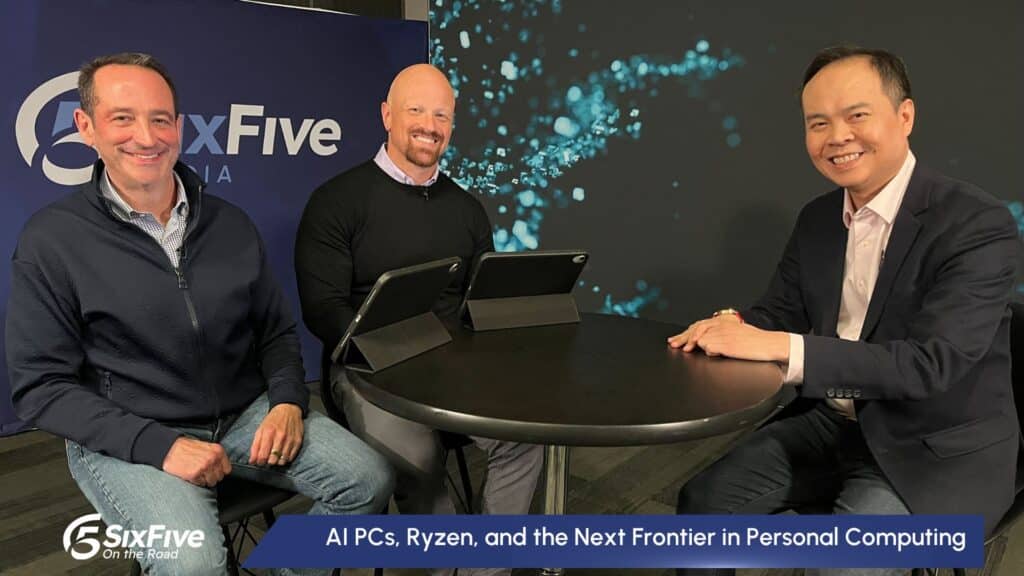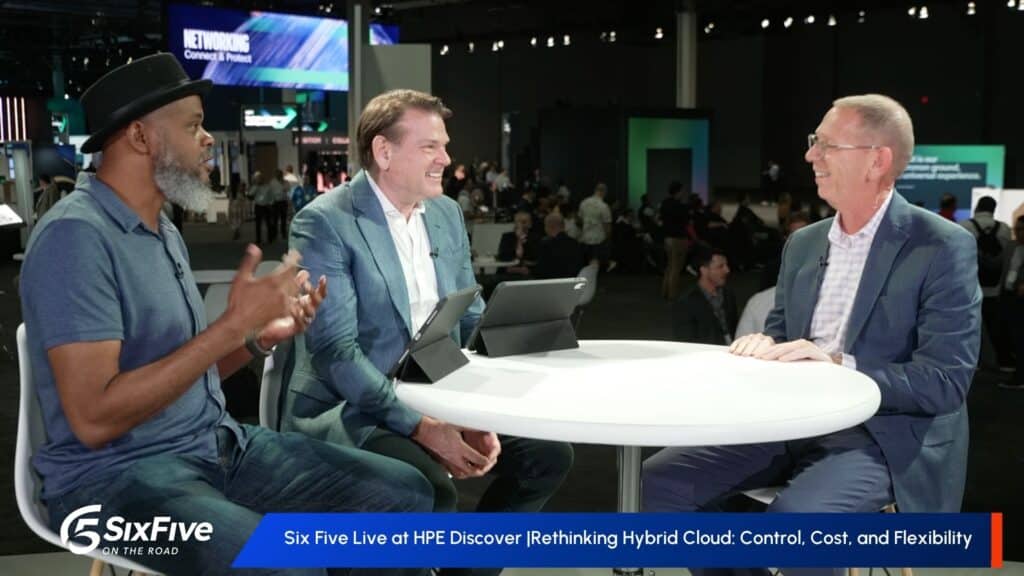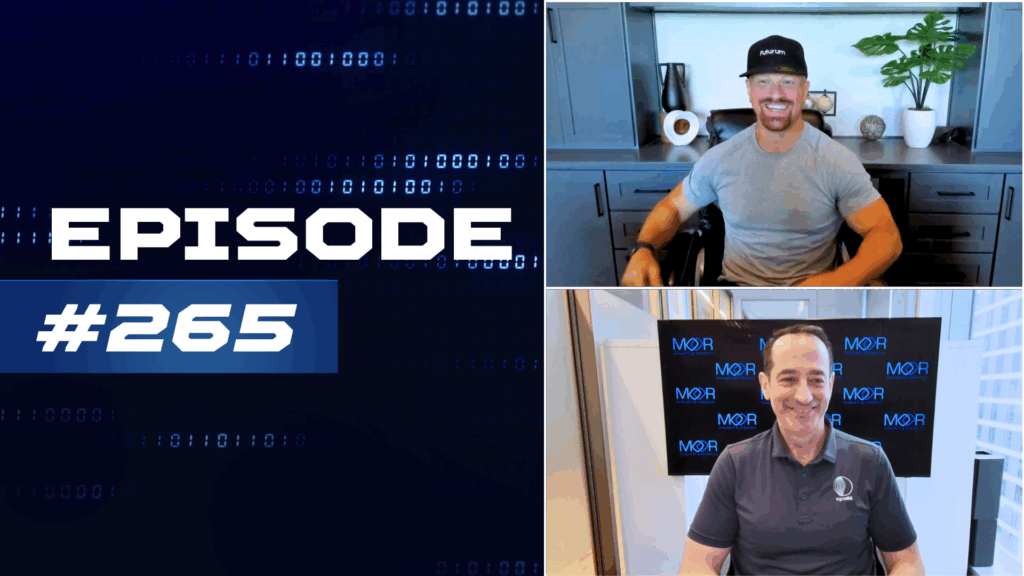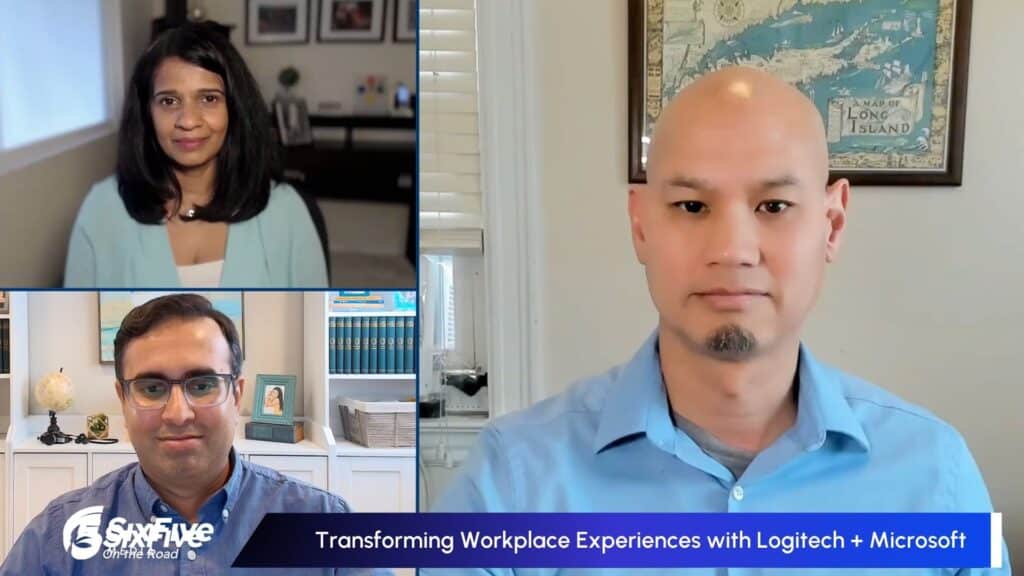The Six Five team discusses IBM Quantum Utility Breakthrough.
If you are interested in watching the full episode you can check it out here.
Disclaimer: The Six Five Webcast is for information and entertainment purposes only. Over the course of this webcast, we may talk about companies that are publicly traded and we may even reference that fact and their equity share price, but please do not take anything that we say as a recommendation about what you should do with your investment dollars. We are not investment advisors and we ask that you do not treat us as such.
Transcript:
Pat Moorhead: So listen, in the history of the Six Five, Daniel, you and I had a very consistent conversation about, hey, things are going to get really interesting when we see business value driven incrementally through Quantum. Now the reality is on any new type of technology it has to go through a certain process, whether that’s 5G that starts with research, whether that’s generative AI that started with research three or four years ago through a seminal Google White paper that came out, the same is true for Quantum. So we’re in this zone of trying to look at what the researchers and scientists are coming up with to give us a better view when there’s going to be incremental commercial volume and you’re going to want to pay attention to this.
Essentially IBM and Berkeley came together, did some serious research and essentially showed that you can show Quantum value without getting to the point where you need perfect qubits. Because the foregone conclusion and why people are like, “Oh this is 10 years away”, is that we need to get the qubits to perfection with fault tolerance. And what IBM and Berkeley showed is that combining error mitigation with over a hundred qubit Quantum computer, you can show value that cannot be done by today’s supercomputer with a CPU and a GPU. I’ve, well not me, my Quantum awesome analyst Paul Smith Goodson has published a Forbes article. I actually did an interview with the Head of Quantum at IBM, Dr. Jay Gambetta when I was over in Paris. So I’ve been sitting on this forever. It’s pretty exciting. Check it out. I think Quantum is going to be here and adding commercial value before most anybody else thinks that. I think this is more evidence of that.
Daniel Newman: So let me ask you Pat, and normally I just come in and opine, but for a long time we have had this thesis that Quantum is cool, but it’s like for 1% of 1% of 1% of the human population that are physicists or some type of deep engineers that can understand just extraordinary technical prowess. And what’s happened is Quantum computing is in lost. Remember Shama Playa Patiyah said it’s uninvestible?
Pat Moorhead: Uninvestible, yes.
Daniel Newman: And mostly because the word is utility. And I saw Jay Gambetta quoted in the New York Times saying that that’s what this moment is about. This moment is about finding utility. Is that kind of how you see it?
Pat Moorhead: It is. I mean it solved a physics problem using noisy qubits that a supercomputer can’t. And it literally went head-to-head with it. Are we ready to parse this off and have Salesforce and Oracle Fusion use it tomorrow? No, absolutely not. But what it did show is we didn’t need to necessarily overcome having perfect qubits or what’s referred to as fault tolerance. So to me this is an in-between state that most people out there had not considered because right now people are lining up out there, they have either these perfect qubits, like 12, so can’t do much. And then you have these very imperfect qubits that are super noisy and you have thousands, tens of thousands. There was nothing in between. And the approach that IBM had taken, which everybody was like, “Hey, love what you’re doing IBM, the quality and the noisiness of what you have out there.” And what IBM is doing is they are correcting those qubits farther up the path, which I think is something that people hadn’t thought of.
Daniel Newman: And for a long time by the way, there was a lot of criticism of superconducting. A lot of the ion trapping companies just said that they would never get the fault tolerance. I’d been somewhat convinced, but at the same time betting against Google and betting against IBM from a bunch of smaller players, maybe there is a certain amount of experience that we have that would say that those aren’t great bets. But remember Pat, if we say anything far enough into the future, we can be right. You just got to keep pushing.
Pat Moorhead: Exactly. Just don’t put a… And by the way, Daniel, when I was at AMD and Nvidia was working with all of these researchers on AI, it looked like a bunch of BS where GPUs were made to do compute and when I was at AMD, we had ATI. We were working on it as well and it looked like the Kobayashi Maru and then boom, University of Toronto used Nvidia GPUs to do image classification. Is it a cat, is it a dog, is it a human? And then it was like people became believers. We are still waiting for that University of Toronto moment for Quantum. But I don’t think we’re 10 years away, I just don’t. Five years away feels a lot more comfortable for me right now.
Daniel Newman: There’s something that maybe this generative AI boom can be attributed to in terms of making us smarter. And that’s the law of diffusion of innovation is being short-circuited, meaning the diffusion of innovation used to take months to years from the earliest adopters to laggards. And now what we’re really seeing is, would you say that someone that’s just trying ChatGPT for the first time today is probably a laggard at this point?
Pat Moorhead: Yeah.
Daniel Newman: You’re lagging. And what I mean is it’s just not true. When Blackberry came into market, there was a few years by which Blackberry users would’ve been considered your early adopters, not like your leading edge, but just early adopters of smartphones. If you had an Apple iPhone in 07, 08, you were an early adopter of the iPhone. And all I’m saying is it took a few years, Pat. I mean now we’re seeing things down to months, now an enterprise technology like Quantum is going to take longer, but don’t bet on the long tail and some of the predictions that it’s five and 10 years. These breakthroughs are coming faster and faster with less time in between.
It’s also another moment to just… I think the market grossly undervalues IBM’s research, and I know that we’ve said this a lot, but they don’t value the Quantum business at all when you look at the actual price of the stock. And I know that’s not our job, but I always look at that for ground truth, they don’t value the research they do in semiconductors, whether it’s around a nanometer or others. They just haven’t found a way to value it. And so I’m hopeful under Arvind Krishna and I’m hopeful that through whether it’s licensing or through the products they’re able to build and put into market here, that IBM begins to get credit for some of the really critical technology they’ve been able to roll into the market.
Pat Moorhead: IBM’s doing some great stuff and the way that they’re approaching Quantum is as if they’ve been through every major technology turn and they don’t feel like they were getting credit for credits due.
Author Information
Daniel is the CEO of The Futurum Group. Living his life at the intersection of people and technology, Daniel works with the world’s largest technology brands exploring Digital Transformation and how it is influencing the enterprise.
From the leading edge of AI to global technology policy, Daniel makes the connections between business, people and tech that are required for companies to benefit most from their technology investments. Daniel is a top 5 globally ranked industry analyst and his ideas are regularly cited or shared in television appearances by CNBC, Bloomberg, Wall Street Journal and hundreds of other sites around the world.
A 7x Best-Selling Author including his most recent book “Human/Machine.” Daniel is also a Forbes and MarketWatch (Dow Jones) contributor.
An MBA and Former Graduate Adjunct Faculty, Daniel is an Austin Texas transplant after 40 years in Chicago. His speaking takes him around the world each year as he shares his vision of the role technology will play in our future.





